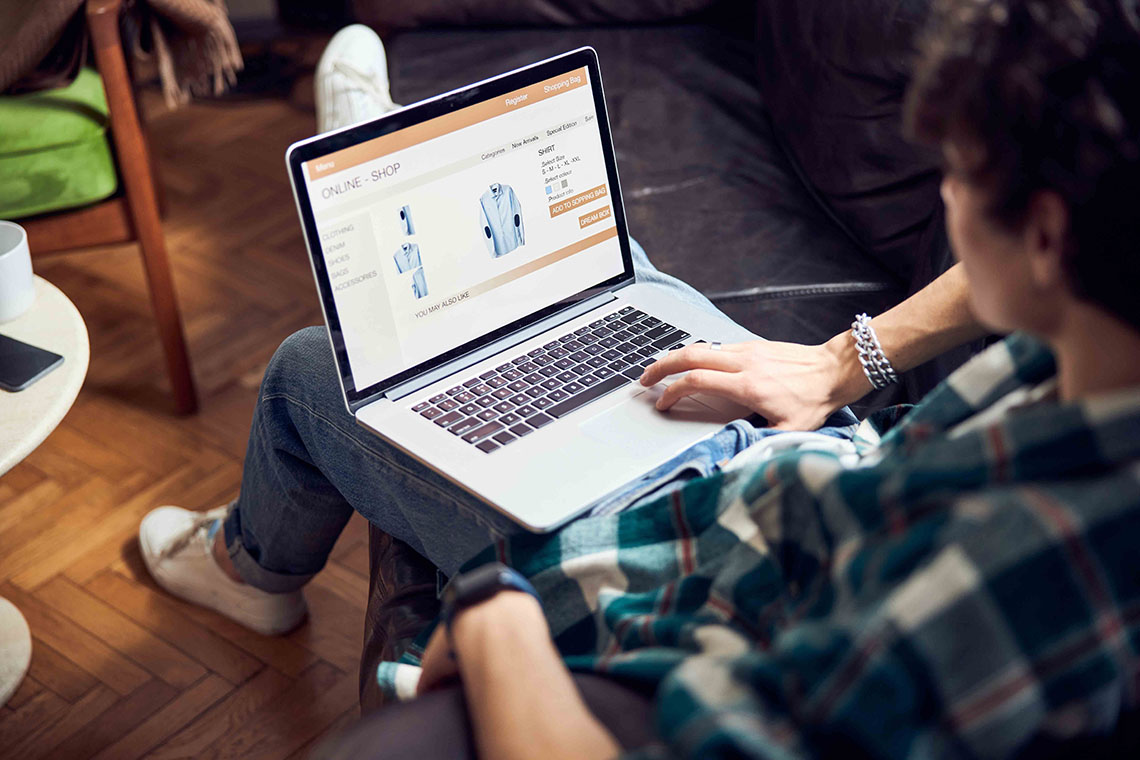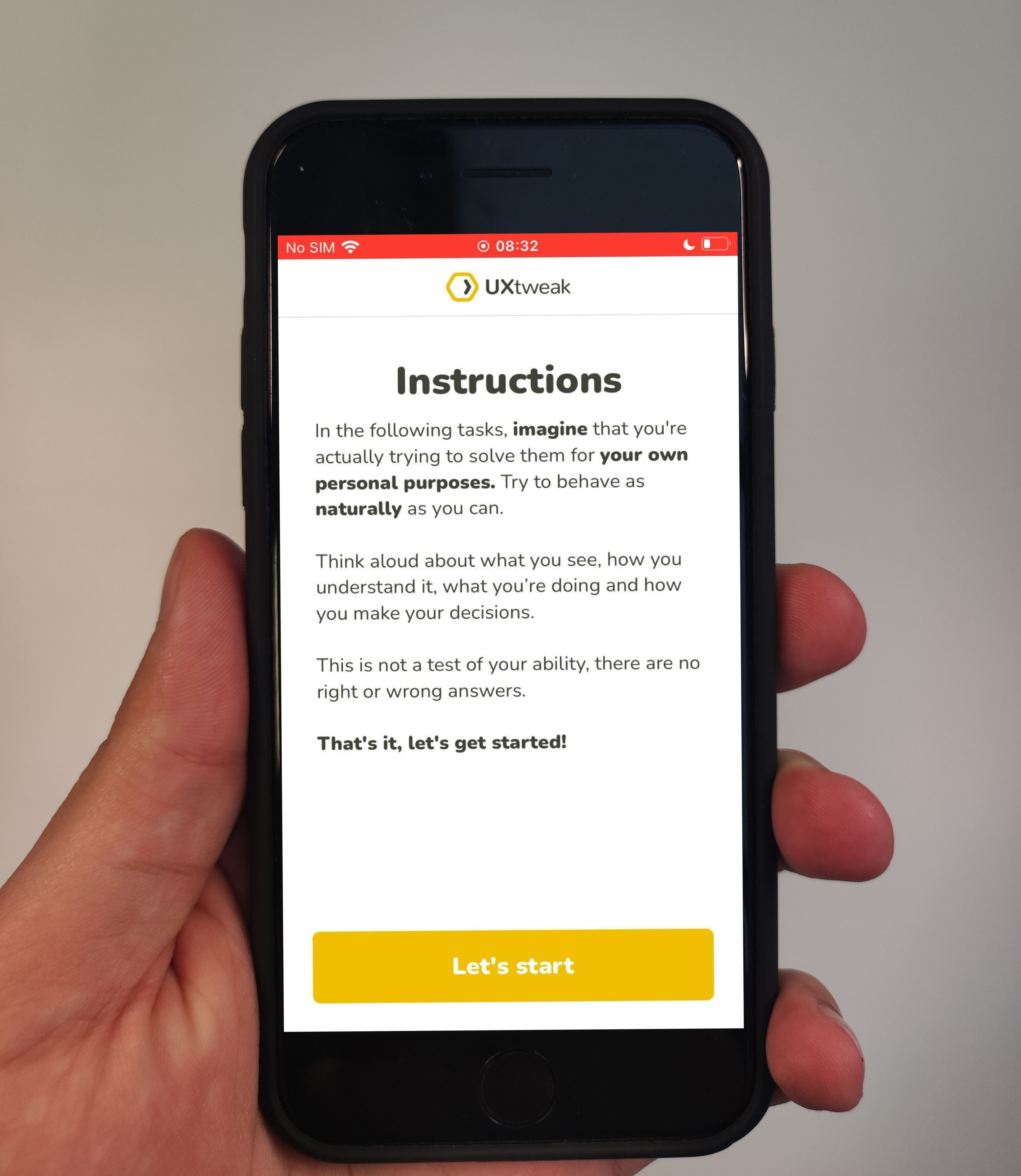If at some point in your career, you have tried to test the product that you have been working on to see whether it is working as expected, then you have already applied some form of usability engineering on it!
The big question is how we can make this testing more systematic and ensure that it adheres to the industry’s best practices. Here at UXtweak, we strive to remain at the forefront of usability engineering. That’s why we have created this jumped-packed article with everything you need to know about it ✅
What is usability engineering?
Usability engineering is a framework for evaluating digital products or services that focuses on the optimization of usability. It incorporates theories from both psychology and computer science. It involves an iterative approach to design by considering the needs, abilities, or even limitations of the intended users.
The end goal of this iterative approach to design is to ensure that the product or service is easy and satisfying to use. Jacod Nielsen thoroughly explained this approach to design in his book Usability Engineering.
Benefits of usability engineering

Usability engineering has a host of benefits for both users and products. This is because it allows for a user-centered design that results in products that better align with the needs of the intended users.
Here are some of it’s key benefits:
Increased User Productivity
Using usability engineering as part of your design process can help you minimize user errors resulting in greater user productivity. Easy-to-use designs allow users to complete their tasks quickly and efficiently. Anything from intuitive flows to streamlined processes can assist in reducing the user’s cognitive load, resulting in turn in greater user productivity.
Usability engineering also allows for the optimization of error rates by helping us design more advanced error prevention and error copying mechanisms. This results in reduced user frustration and greater satisfaction.
Product Adoption
Usability engineering focuses on a deep understanding of users’ behaviors and actions. This prompts more intuitive, frictionless experiences.
Products whose top priority is usability are more prone to be adopted by users than complex products that go against the users’ mental models. Satisfied users will not only adopt your product but will most likely come back for more and even recommend the product to their peers. In this way, you can retain users in highly competitive industries.
Cost Savings
Incorporating usability engineering into your design approach will also save you a ton of money.
On the one hand, by identifying usability issues early on in the design process you can save on development costs and avoid costly redesigns.
On the other hand, easy-to-use products do not require a high investment in onboarding support and training since users can easily use the product without extensive guidance through customer support or training and onboarding materials.
Key principles of usability engineering

We have collated the ABCs of usability engineering. Worth noting is that the key principles described below are intertwined and can form a solid foundation for incorporating usability engineering in your journey toward improved user experience.
1. User Research
User research is a major milestone when it comes to usability engineering. It is all about understanding the needs and pain points of your target users.
Research allows designers to pinpoint the preferences and expectations of their users. When conducting user research continuously, you can ensure that the design solutions align with the users’ expectations. User research is a great tool in the designer’s arsenal to pinpoint potential usability issues and uncover opportunities for improvement.
There are many research methodologies you can use to understand your user better. But the great thing is, most of the research studies can be conducted online with the help of modern UX Research Tools!
2. Prototyping
Creating and user testing prototypes is another underlying principle of usability engineering. Prototyping calls for the creation of mock-ups or other tangible designs, like wireframes or even interactive prototypes. Prototypes are a great tool for any designer not only to visualize their ideas but also use them to gather feedback from peers and users.
Using prototypes to conduct usability testing is one of the best ways to gather product feedback as part of your usability engineering framework. Testing designs with prototypes will help you validate your design decisions and iterate your way to your product’s success.
3. Usability Testing
Usability testing is another critical component of the usability engineering approach. It involves testing your design solution with the target users by giving them tasks and observing the way they interact with the product.
Through this observation, you can collect invaluable insights into the user’s pain points and expectations and validate whether your design meets the user’s needs. It also allows for iterative improvement throughout the whole product lifecycle.
4. Design Iteration
The final but equally important milestone of the usability engineering framework is the iterative approach to design. Design iterations allow for refinement and improvement of the design solutions based on user feedback.
This critical step involves translating usability issues and user feedback into new design solutions. Through iterating, designers can tailor their designs to better meet the user’s needs and expectations.
Tool for usability engineering
There is a vast majority of available tools and techniques to get started on your usability engineering. The ones mentioned below are a selection of tools that made us tick and we think are worth a shoutout. However, you can choose your tool based on your project requirements.
Prototyping tools
You will most certainly find an abundance of prototyping tools out there to help you implement a usability engineering approach to your design process, but Figma and Axure certainly stand out. Both Figma and Axure are used widely for high-fidelity prototyping.
These tools allow designers to put their design thoughts into ‘paper’ and create tangible prototypes that can be tested with users.
Prototype testing tools
When it comes to prototype testing tools there is no need to look further. UXtweak’s Prototype Testing Tool is one of the most comprehensive tools in the market at the moment as it enables UX Researchers and designers to engage in usability testing sessions and gather user feedback without having to worry about the logistics of it.
You can easily set up a prototype user test in just a couple of clicks!
See how easy it is in this quick video tutorial:
Website/application usability testing tools
Depending on the needs of your project you might want to opt for more specialized usability testing tools designed specifically for websites and applications. UXtweak offers both website testing tools and mobile testing tools that allow for maximum support when it comes to remote usability testing.
👀 See them in action in these quick demos:
Information architecture research tools
There is a host of information architecture tools to choose from. Information architecture tools help you effortlessly perform tasks such as card sorting and tree testing, activities that allow designers to better understand which categorization makes more sense to the user and how they would navigate the website or application structure.

Other assorted tools
The categories mentioned above are just a small sample of the research tools that are available to help you implement a usability engineering approach to your design process.
Other assorted tools and methodologies include the preference test, the five Second Testing Tool, and survey tools, which can be used to gather both qualitative and quantitative feedback. Last but not least, collaboration tools such as Miro or Slack can be a great help when it comes to documenting usability engineering activities, enabling design teams to collaborate efficiently and effectively.
Usability engineering approach
If you don’t know how to get started with usability engineering, here’s a 6-step process for you to follow:
- Research
- Analyze
- Define your goals
- Design
- Test & Iterate
- Launch & Evaluate
Let’s take a look at each of the steps in detail:
1. Research
The first step of your usability engineering process should be identifying your target audience. Take into consideration not only their demographics but also the jobs to be done and any other specific needs or even constraints that your user might have.
You can gather those insights by conducting user research using different qualitative and quantitative tools and methodologies, including but not limited to surveys, focus groups, and usability testing.
2. Analyze
Your next step is to delve into the user insights to uncover patterns and analyze the findings to find what makes your users tick. At the end of the analysis, you will have gained a deep understanding of the user’s mental models as well as pain points.
From there, you can create artifacts, such as user personas and scenarios, and user journeys based on which you will start building your design solution.
3. Define your goals
Defining clear and achievable usability goals is what comes next. Measuring results goes hand in hand with improving user experience so ensure your goals are clear and above all – measurable.
4. Design
This is when UX design comes into play. Bear in mind that the design at this stage does not necessarily mean a well-polished, high-fidelity prototype. This is your chance to create different versions of your design solution and try to visualize them using prototypes that can be tested with users.
5. Test & Iterate
Once you are happy with the design solutions that you have created, engage in rigorous testing and iterate based on feedback. At this step, it is important to observe your users and their interactions with your design so conducting a usability test on your prototypes is the best avenue.
Test your designs with the help of UXtweak Prototype Testing tool!
Learn more about Figma User Testing and how to conduct it with UXtweak.
6. Launch & evaluate
Once the design is good to go, you can finally implement your solution but this is not the end. Usability engineering testing involves ongoing monitoring and iterating based on user feedback to meet the ever-changing user needs.
Make sure to continuously assess the usability of the implemented solutions and product as a whole so that you can gather valuable insights to refine and enhance the user experience.
Usability engineering best practices

There are some golden standards when it comes to usability engineering. By following the below usability engineering best practices, you will be able to design user-centered products that are easy and pleasurable to use.
-
Place users at the heart of the design process
Understanding the needs and challenges of your users and engaging in user research are the alpha and the omega of the usability engineering approach. Use a variety of qualitative and quantitative data to do so.
-
Don’t reinvent the wheel
Always design for usability ensuring that your design solutions adhere to established interaction patterns and that do not go against the user’s mental models. To achieve that you can start by organizing content intuitively, using clear labeling.
-
Test early and often
Usability tests should be contacted throughout the whole product lifecycle. When it comes to new designs or features, the earlier you test the better. Continuous testing is also equally important so make sure you cultivate a culture where feedback is part of your standard design process.
-
Iterate, iterate, and iterate
Iterative designs based on user feedback are another smart practice when it comes to usability engineering. Iterations don’t always have to be radical, you can start small, test, and then iterate again.
In short
Usability engineering is a framework used to enhance the usability of digital products using an iterative, user-centered approach. It is hugely based on user research and particularly in understanding the user’s needs, pain points, and most importantly actions and behaviors.
Prioritizing user involvement, designing for usability, as well as testing early and often are some of the golden rules of usability engineering. In order to get started on implementing this usability framework, check out our testing platform!
Create your free UXtweak account and start testing today!








